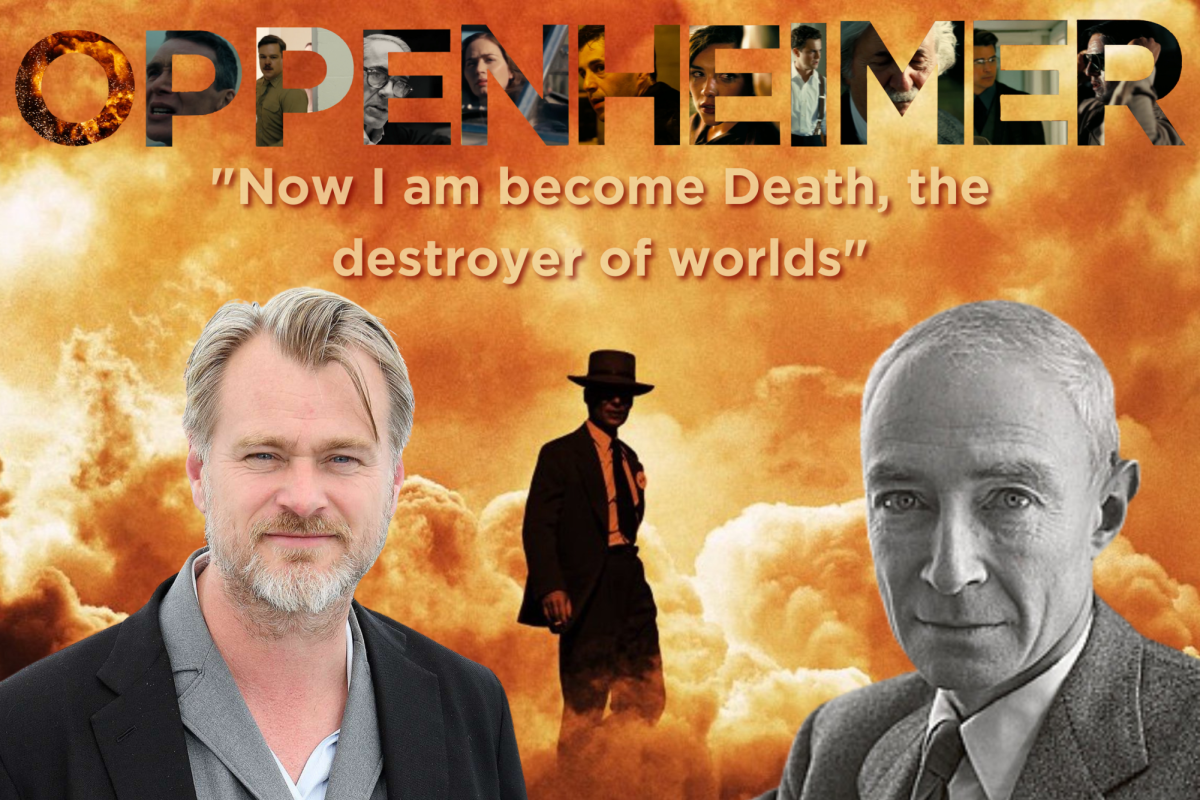As the production of “Tenet” neared its end in 2019, Robert Pattinson gifted director Christopher Nolan a book of speeches delivered by physicist J. Robert Oppenheimer. This gift inspired Nolan’s direction for his next blockbuster: a biographical thriller based on Oppenheimer and the Manhattan Project.
Nolan masterfully addresses a turning point in world history in a way no one else could. The opening shot of the movie describes how Prometheus was punished for giving fire to humans, foreshadowing how Oppenheimer will become tormented by the repercussions of building the first nuclear bomb.
Interestingly, the movie is formatted in a similar manner to “The Imitation Game,” as both movies are largely split into two main time periods. One plotline runs through World War II, covering the scientific achievements featured in each movie, while the second takes place several years after the war as people dig up secrets in the scientist’s past.
However, Nolan creatively distinguishes “Oppenheimer” from other biographies while showing where creative liberties were taken. Scenes in black and white were described by Nolan as “objective,” and the color scenes, “subjective.”
A particular highlight is how the explosion of the atomic bomb was recreated without computer-generated imagery. Christopher Nolan’s commitment to using practical effects remains steadfast.
The visuals succeed in more than just the Trinity Test of the nuclear bomb. Throughout the movie, audiences are given glimpses of what’s going on in Oppenheimer’s head as he thinks about subatomic particles and the destruction they can cause. Constant tension like this is vital to the success of the movie, as its 3-hour runtime can dissuade people from seeing it. Thankfully, there is never a dull moment in “Oppenheimer.”
The movie can be hard to follow at times, but never to the point where one gets overwhelmed. “Oppenheimer” only slows down to ruminate on the guilt that Oppenheimer feels as well as the morality of using the nuclear bomb. However, Nolan was careful not to attempt to answer these moral questions in any way, leaving it up to the viewers to decide for themselves.
Solid acting across the board portrays nuance in each character. There is hardly a weak link in this star-studded cast, and each actor helps the viewer immerse themself in the story. Cillian Murphy is a standout of the bunch, playing the title character in a way that feels genuine. Oppenheimer is not portrayed as a saint; his shortfallings are on full display, which makes him a more likable and relatable character. This rule applies to most main characters, as no one is portrayed to be perfect, thus adding to the believability of the history behind the movie.
The only disappointing aspect of the characters is that so many scientists are presented in the movie that it can be hard to keep track of everyone’s name and motivations. Surely one will recognize a face they saw earlier, but when so many characters are presented, they can be switched up in people’s minds, causing confusing moments.
“Oppenheimer” is a standout portrayal of the terrifying destruction humanity can inflict upon itself as well as how the creators of powerful weapons live with their feelings of guilt. Viewers will be forced to consider difficult moral decisions and question previously held conceptions about humanity.
Email: dannyogrady2026@u.northwestern.edu
Twitter: @DannyMOGrady04
Related Stories:
— Reel Thoughts: ‘Indiana Jones and the Dial of Destiny’ rebounds to end series on a high note
— Reel Thoughts: ‘Black Mirror’ season six is a mixed bag
— Reel Thoughts: Disney’s live action remake of ‘The Little Mermaid’ makes a splash



















